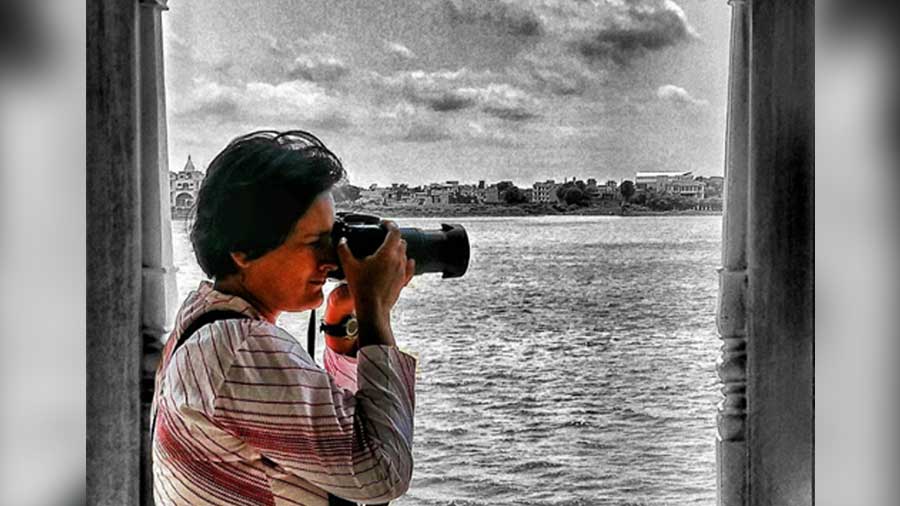Nothing captures human consciousness quite like a moving image, whose impact pervades, sometimes transcends, all our senses.
But how are these moving images, which find their creative zenith through films, conceived, structured and executed? How exactly does a filmmaker visualise a film?
Few contemporary creators have visualised cinema through as many diverse lenses as Angelica Monica Bhowmick. Having worked on films ranging from box office hits such as Love Aaj Kal (2009) and Bodyguard (2011) to the critically acclaimed Newton (2017) and Aadhaar (2019) to out-of-the-box movies like Khosla Ka Ghosla (2006) and Oye Lucky! Lucky Oye! (2008), Monica understands how moving images work better than most.
My Kolkata caught up with Monica over coffee and biscuits on a balmy evening at the Tollygunge Club to chat about her vision as a production designer and art director, her principles and projects, her Kolkata connection, collaborating with Suman Ghosh and more.
Edited excerpts from the conversation follow.
'Kolkata is a city of music, books, art and great conversations'
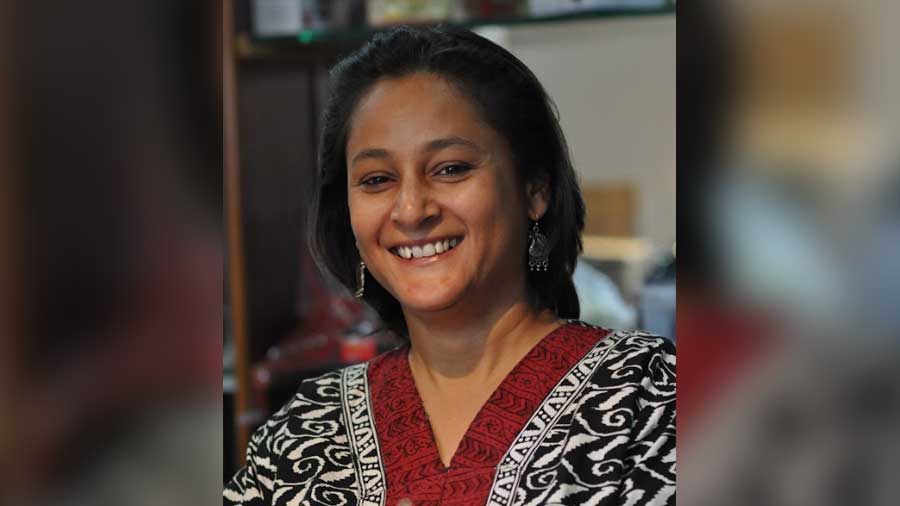
Bhowmick spent two and a half years in Kolkata during her childhood Courtesy: Angelica Monica Bhowmick
My Kolkata: First things first, what has been your Kolkata connect down the years? Have you got a lot of friends and family members here?
Angelica Monica Bhowmick: I had quite an adventurous childhood. My father was in the army, which meant that we’d keep shifting. I did my schooling across some 15 cities, and Kolkata was one of them. I spent around two-and-a-half years in Kolkata as a child before we had to move. I came back to Kolkata as an adult when I was working on Shadows of Time in 2003. I’ve always loved returning to Kolkata. It’s a city of music, books, art and great conversations, all things I cherish.
I don’t have a lot of friends or family here, barring some pishis, kakus and jethus. But there’s always a sense of belonging in Kolkata. It’s a soothing city, one that doesn’t get on my nerves, which isn’t something I can say about Delhi or Mumbai!

Monica in Mumbai. 'There’s always a sense of belonging in Kolkata. It’s a soothing city, one that doesn’t get on my nerves, which isn’t something I can say about Delhi or Mumbai,' she says @Angelica Monica Bhowmick/Facebook
Suman Ghosh apparently gives you quite a culinary tour of Kolkata. What have been your favourites till now?
If there’s anybody I’d call my food buddy on this planet, it’d be Sumanda. I’ve had a lot of dishes with him in Kolkata and it’s quite difficult to pick one. Today, for instance, we went to this place called Tarun Niketan (on Rashbehari Avenue) and I absolutely loved the food there. We had a classic Bengali lunch, with shukto and many different kinds of vegetables and dal and fish and whatnot. I feel very full, both in the stomach and at heart!
However, my favourite dish with him was actually in Deogarh. We had this thing called mutton atthe, which is mutton cooked in an earthen pot over cinders for a long period of time. It was sublime.
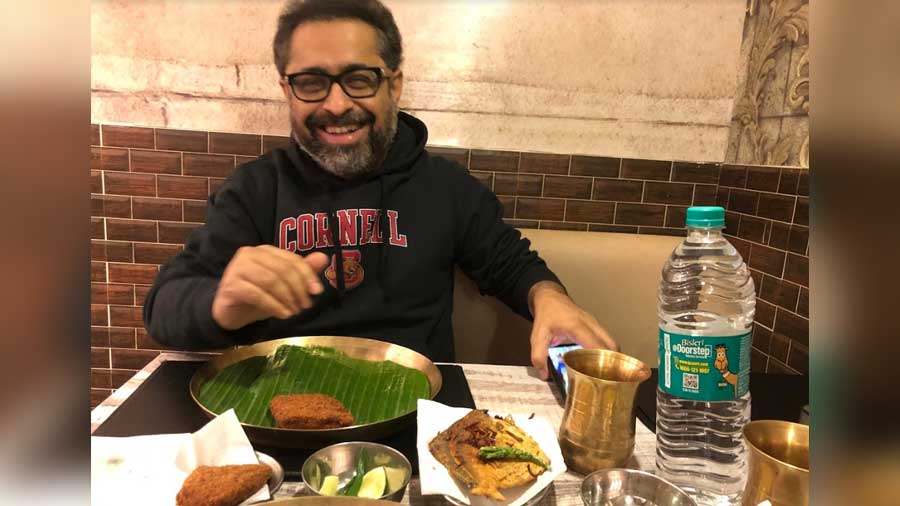
Suman Ghosh is Bhowmick’s culinary guide and food buddy in Kolkata @Angelica Monica Bhowmick/Facebook
Describe your experience of working with Suman. How did the two of you start collaborating?
We were supposed to work for the first time on Aadhaar. But at the time I was already working on Tryst with Destiny (2020), so my dates weren’t initially working out. It was really sad for me, because I had heard so much about Suman Ghosh and was looking forward to working with him.
At the end of the first shooting schedule for Tryst with Destiny, I was at home and it was Diwali. I just messaged Sumanda wishing him Happy Diwali and that ended up being a turning point. He told me later that after seeing my message he had resolved that he had to work with me, as he was very touched by the wish. Somehow we managed to juggle our dates and ended up working on Aadhaar.
Sumanda pushes you and tests you constantly to be a better professional, a better person. And yet, at the same time, he makes you feel completely comfortable and puts you in a happy place. He’s the kind of person who can glide through all strata of people with equal ease. Everything happens with him over adda, all my work with Sumanda revolves around adda. He transcends contracts and all those crass discussions of business.
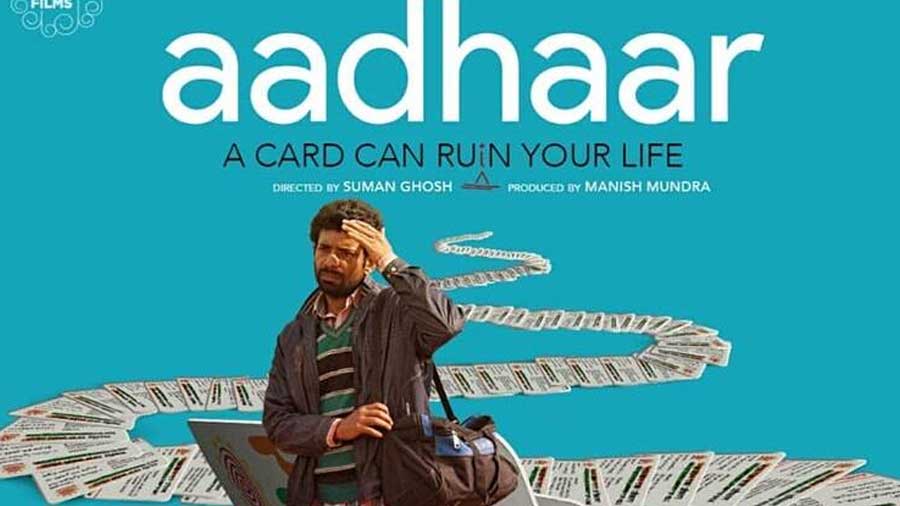
Bhowmick worked with Ghosh for the first time on Aadhaar
What are you two stirring up in Suman’s storytelling pot this time in Kolkata?
All I can say for now is that it’s very different from most of his work so far. It deals with the working class and their struggles and it’s going to be shot entirely in Kolkata. It will be an eye-opener for a lot of people, just as it continues to be one for us while doing the research and the recce.
I was obsessed about working in Merchant Ivory productions

'As for inspirations and influences, I remember being obsessed about working in Merchant Ivory productions when in film school.' Bhowmick says
How did you get drawn to films and filmmaking? Who were the filmmakers who inspired or influenced you early on?
As a kid, I loved to paint. Even now, painting is something that’s really important to me. After I graduated from college, my biggest problem was figuring out how to pay for all my paints and canvases. That’s how I got into filmmaking. I wanted to be a cameraperson, because I was interested in photography. But given the way my university course (at Jamia Millia Islamia) was structured, I passed out with a specialisation in direction. I worked in television for a while, made a few documentaries and independent films, before assisting for the first time, which was in Khosla ka Ghosla, with Dibakar Banerjee.
As for inspirations and influences, I remember being obsessed about working in Merchant Ivory productions when in film school. And then there was Ingmar Bergman, whose films we’d habitually inhale to evolve our sensibilities. His use of colours and textures, his limited palettes were in a class of their own. But most of my visual communication was picked up from the world of art, be it the High Renaissance or the post-Renaissance.
How did your time at Jamia Millia Islamia, where you completed two degrees, shape you creatively?
Jamia for me was in two phases. First, I completed my graduation in painting over four years and then I went back to study films. When I was studying art at Jamia, I was rather angry, because I felt that I could’ve learnt a lot more. But when I started studying films, I had to redefine myself, redefine my sense of communication. Apart from all the technical skills, Jamia helped transform my personality from someone who was used to painting like a maniac all by herself to someone who could get along with a team, communicating artistically through films.
'Production design is everything you can sense, and not just see, on screen'
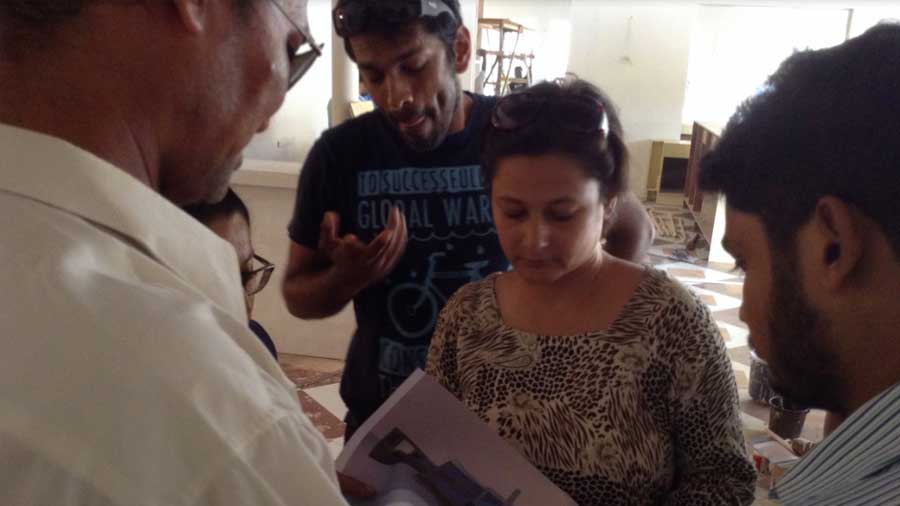
'Everything I do is about setting a film to a visual key that fulfils an emotional trajectory,' she says Courtesy: Angelica Monica Bhowmick
You have been the production designer for a wide variety of television series and films. For those of us on the outside, could you explain what exactly the role of a production designer entails?
Being a production designer is about managing every visual aspect of a film, from choosing the locations to the colours to the textures and even collaborating on the costumes. In films like Shadows of Time, production design was also about giving the director as much detail as possible about the context and setting of a scene. I remember we had to show how fish was cooked in a Bengali kitchen so that the director could get every nuance spot on.
Even when it comes to syncing sound, visuals play a big role. So production design must take into account everything you can sense, and not just see, on screen.
Everything I do is about setting a film to a visual key that fulfils an emotional trajectory.
Let us take two films for which you have been the production designer – Bodyguard and Newton. How do you adapt your understanding of film grammar and skill set for projects as polar opposites as these two?
The location recce for Newton lasted almost a year, just because we didn’t find the right kind of forest. We wanted a particular kind of foliage, changing colours, costumes and a specific aesthetic. We had the freedom to do all that for Newton.
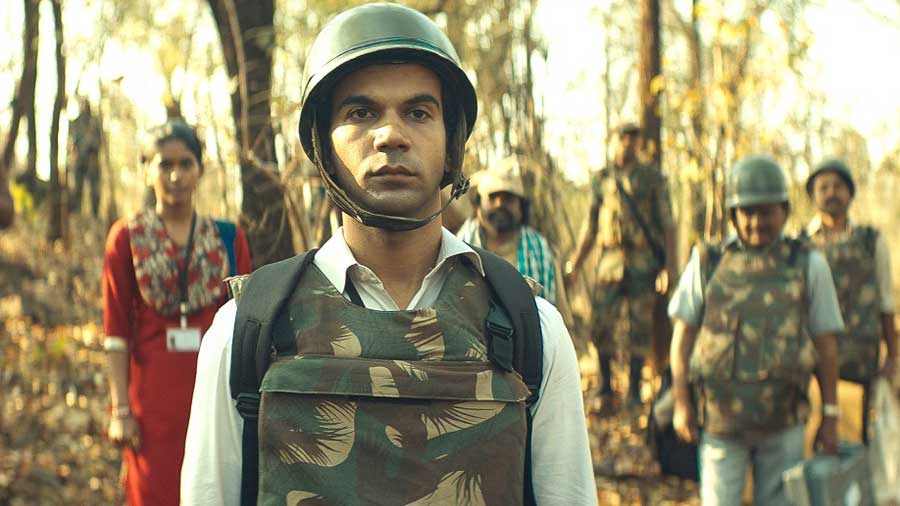
It took Bhowmick and her team a year to find the perfect location for shooting 'Newton'
But in contrast to that, a film like Bodyguard was a completely different deal. Over there, it’s more about adjusting the set to what the actors (Salman Khan, Kareena Kapoor…) are going to wear – and they’re all trendsetters in their own ways – rather than the other way round. There would be 10 sets of costumes for the actors to choose and then if their choices didn’t go with the look and feel of the set, the actors wouldn’t change their costumes. Instead, I’d have to repaint the sets. So, it’s a different ball game for which you’ve got to bring out a different skill set.
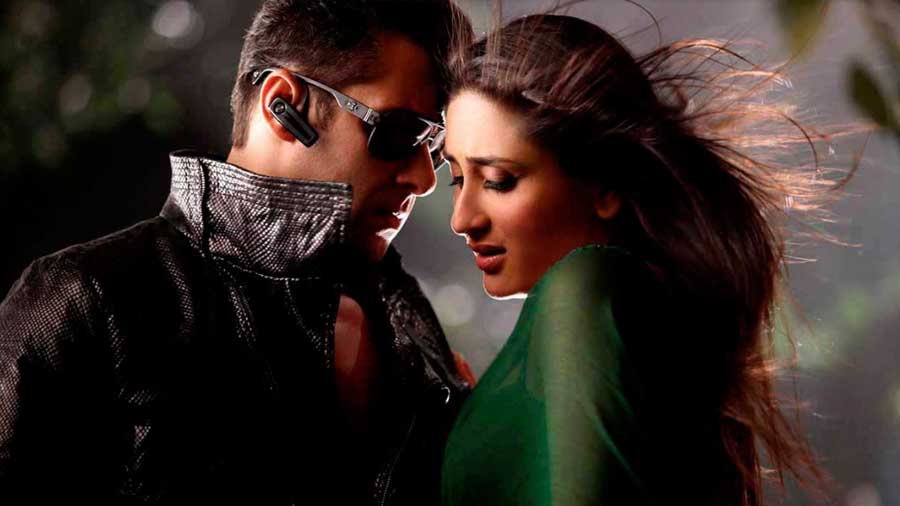
Bhowmick had to adapt her set according to the costumes of the actors in 'Bodyguard' rather than the other way round
'Dibakar Banerjee has a tremendous clarity of vision and knows what he wants'

Bhowmick regards 'Oye Lucky! Lucky Oye!' to be one of the toughest challenges of her career so far, mainly because of the level of research required for the film
Tell us about Oye Lucky! Lucky Oye!, which must have required bags of research given the plot as well as the quirky nature of the film.
I was initially brought in to help Dibakar (Banerjee) with the research for Oye Lucky! Lucky Oye!, but ended up as the art director for the film. Even though I got the Filmfare for the film (for best art direction), I took an immense amount of input from Dibakar. He has a tremendous clarity of vision and knows what he wants. But just like Sumanda, he also lets you do your own stuff. Every creative decision becomes a conversation.
Executing Oye Lucky! was quite a challenge, not least because of the different timelines in the film and all the props that were required. The entire film was shot in Delhi, which isn’t the easiest place to shoot. There wasn’t one kabadiwala in Delhi who didn’t know us by the time we finished, such was the depth of the research. We got hold of so much junk, found out about chemicals that can be used to make the junk look up to scratch and worthy of being stolen (for the purpose of the plot, of course!).
But it all paid off for me, not just with the award but with what Pareshji (Rawal) said in an interview. He was asked how hard it had been for him to slip into his different roles in the film. He said that it hadn’t been hard at all, for when he walked on to set, he could easily transition from one world into another. The way the set looked and felt allowed him to slip in and out of his characters. I felt so good when he said that, it made everything feel worth it!
'Both technical training and on-set experience are essential for films'
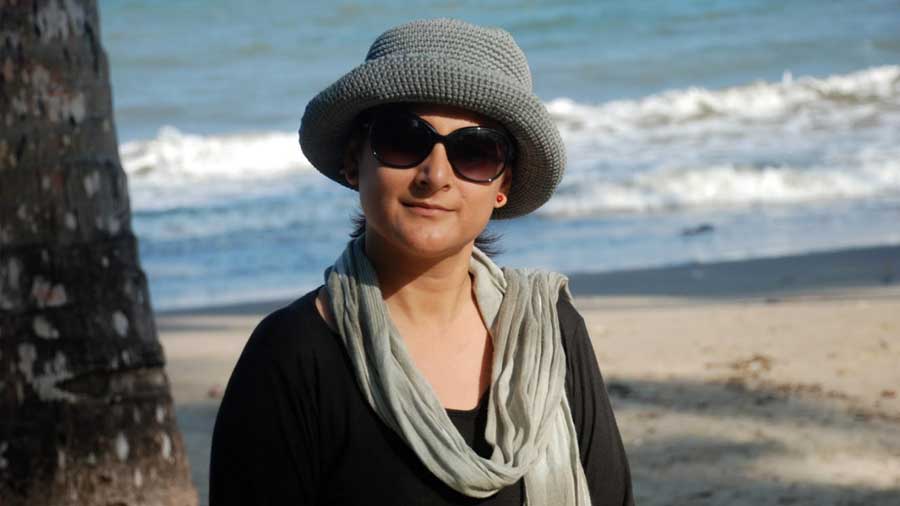
Bhowmick feels that it is never a waste of time to study films formally @Angelica Monica Bhowmick/Facebook
What would you tell a teenaged Monica wondering whether to study films in a classroom setting or take the plunge and start working on set?
From what I’ve seen so far in my experience of working with youngsters, those who come without a formal education are very high on enthusiasm. But they lack the technical knowhow. On the other hand, those who have their training in place aren’t always willing to do everything on set, perhaps because their education makes them feel certain aspects are unnecessary or beneath them. I feel that you need a combination of both. Each one of us learns along the way when we start making films, but we also learn faster if we’ve got a good base of technical training to build on.
Finally, what have you been watching and reading recently? Any film or TV show or book recommendations for our readers?
This sort of a question can only come from someone in Kolkata! The latest book I finished is Sumanda’s book on Soumitra Chatterjee, and that’s an incredibly insightful read. As for stuff to watch, I mostly get my list from Sumanda every time I meet him. But there’s a lot of international content and documentaries that I love on Netflix. If I had to pick one, I’d say Afghanistan: The Great Game.
